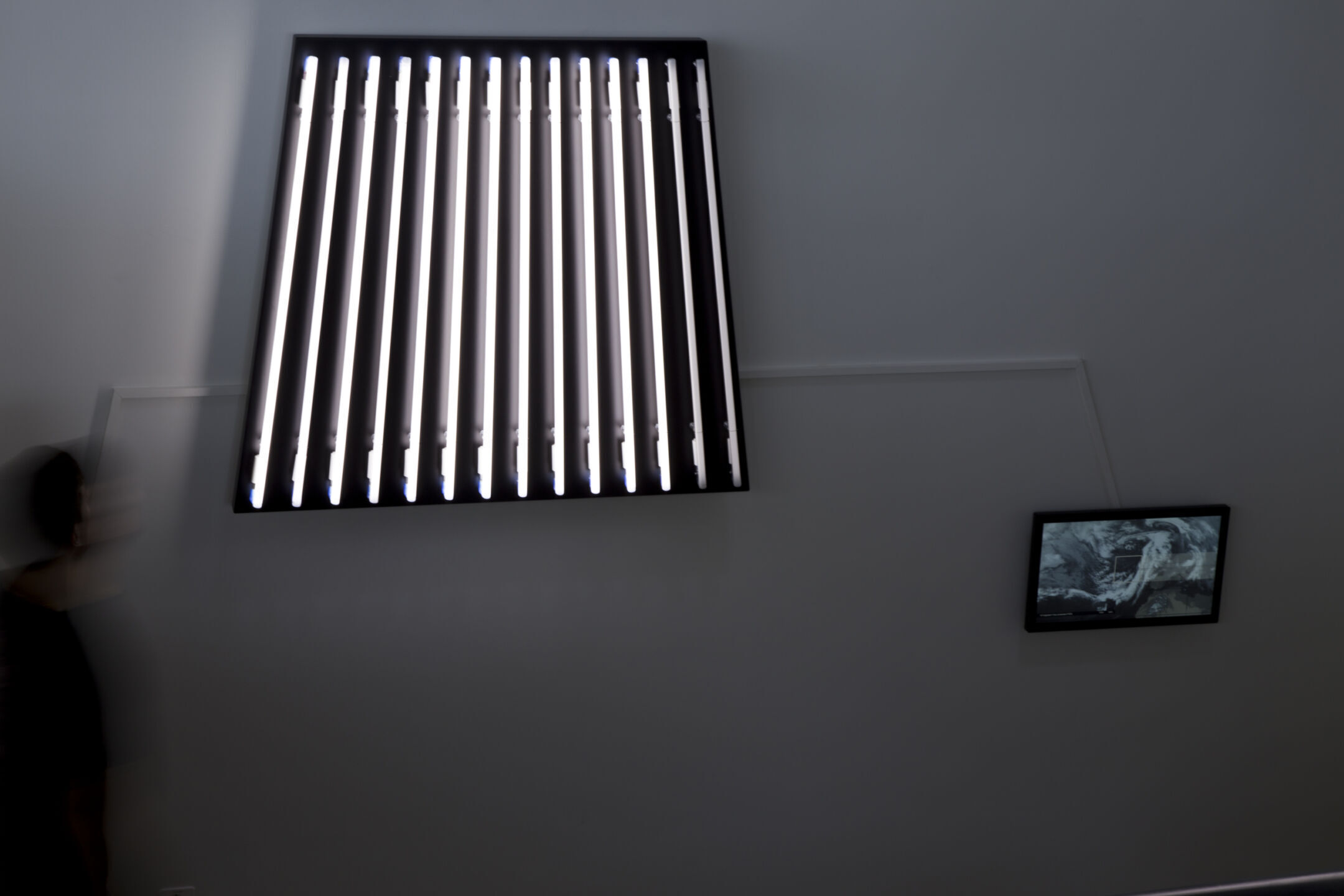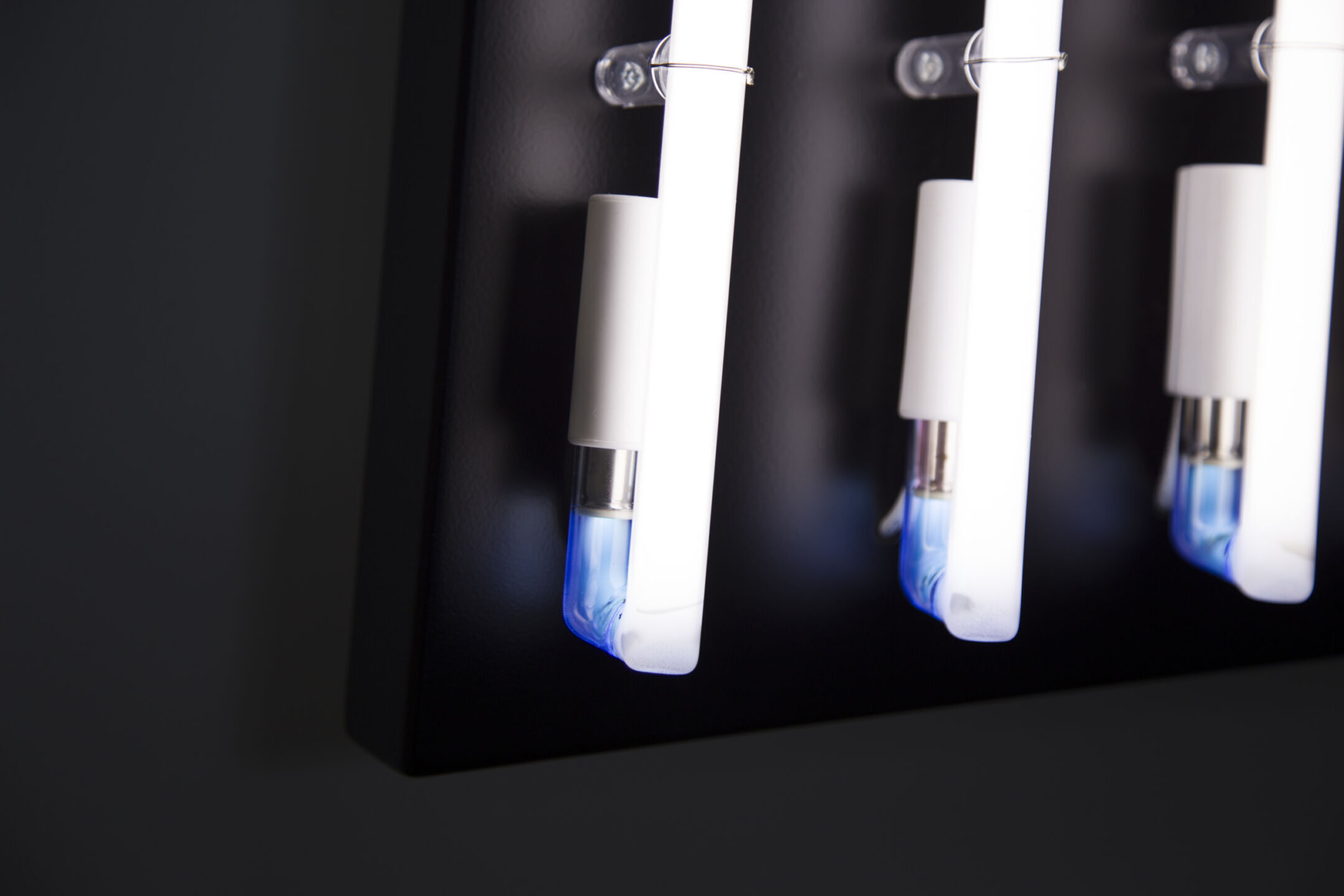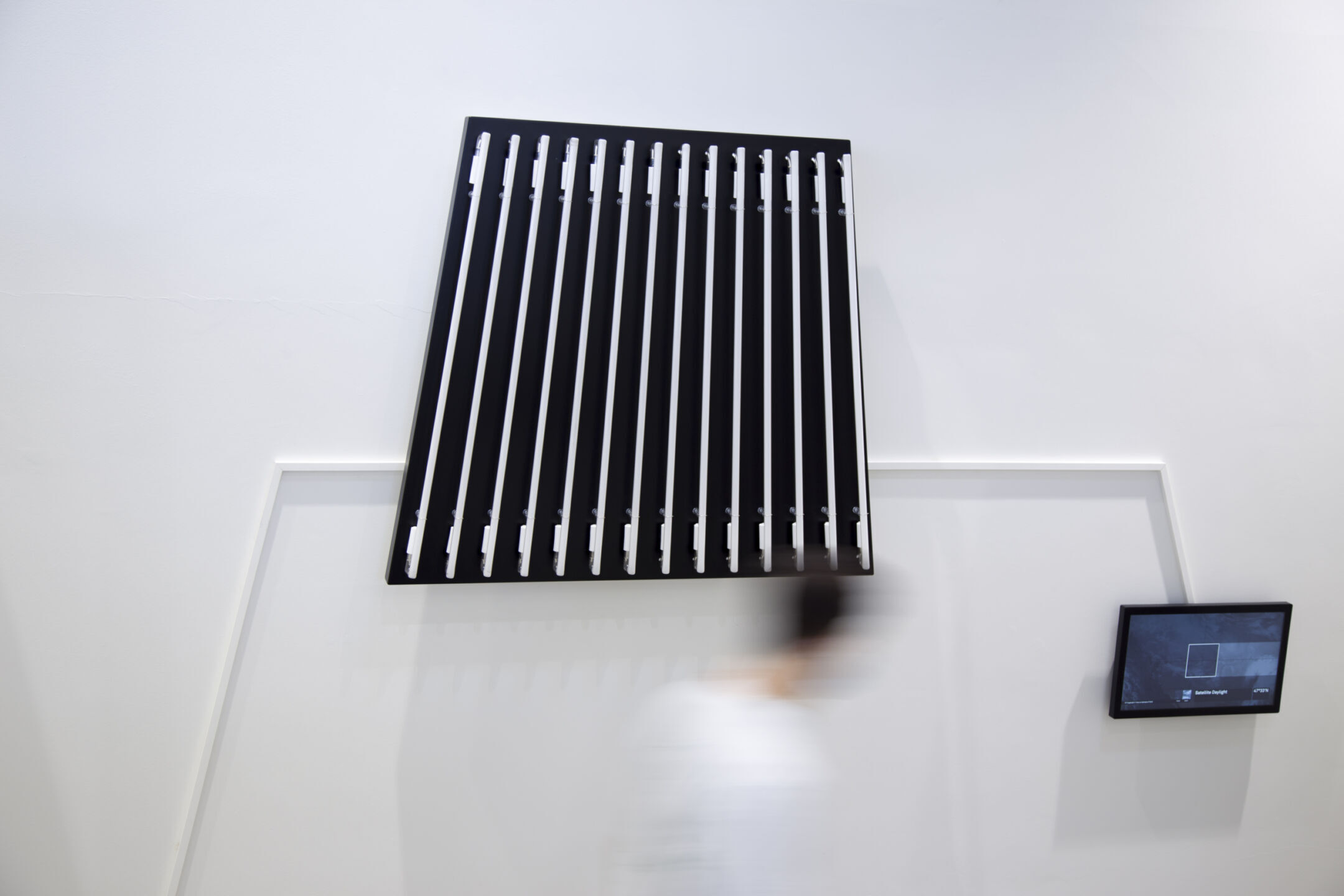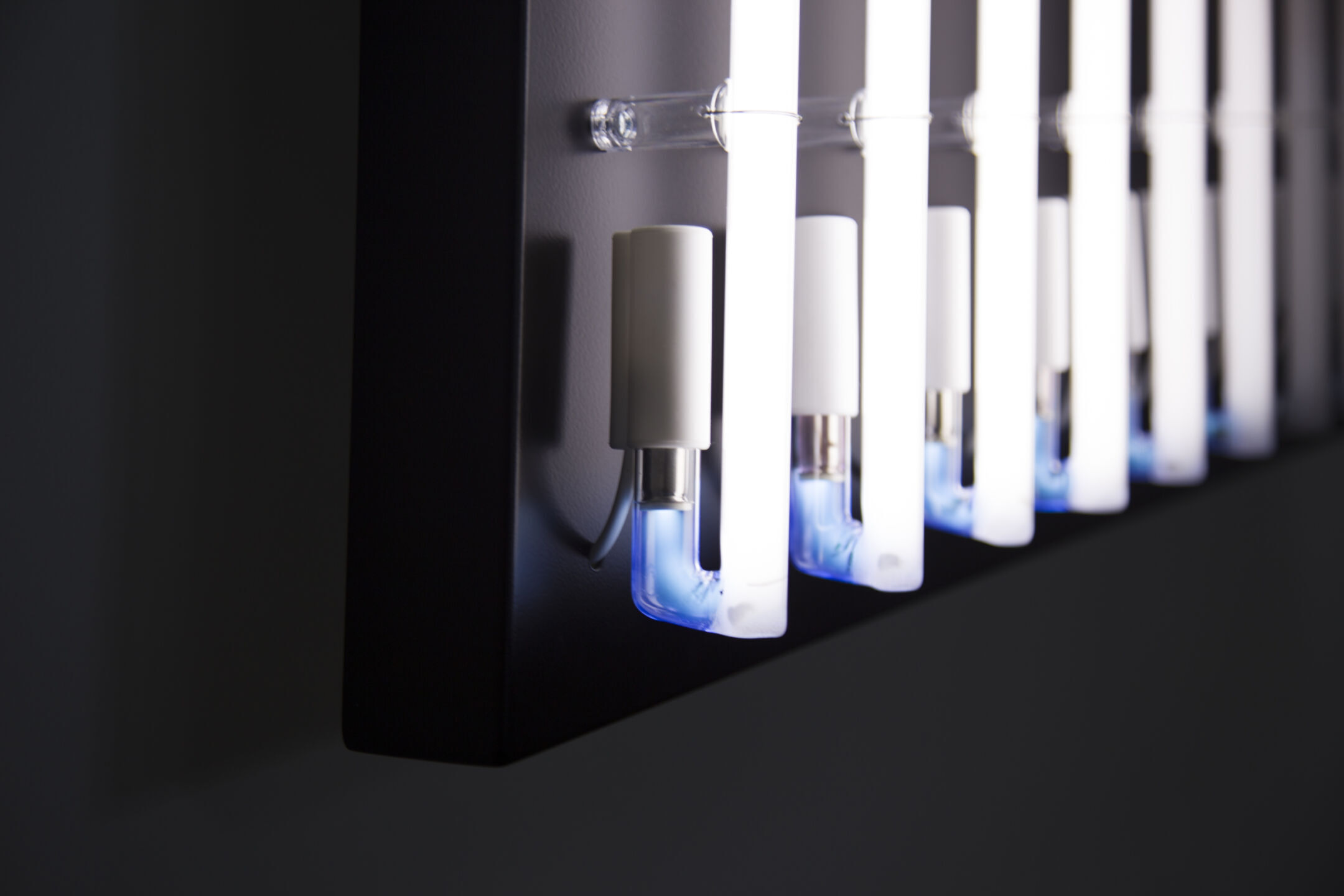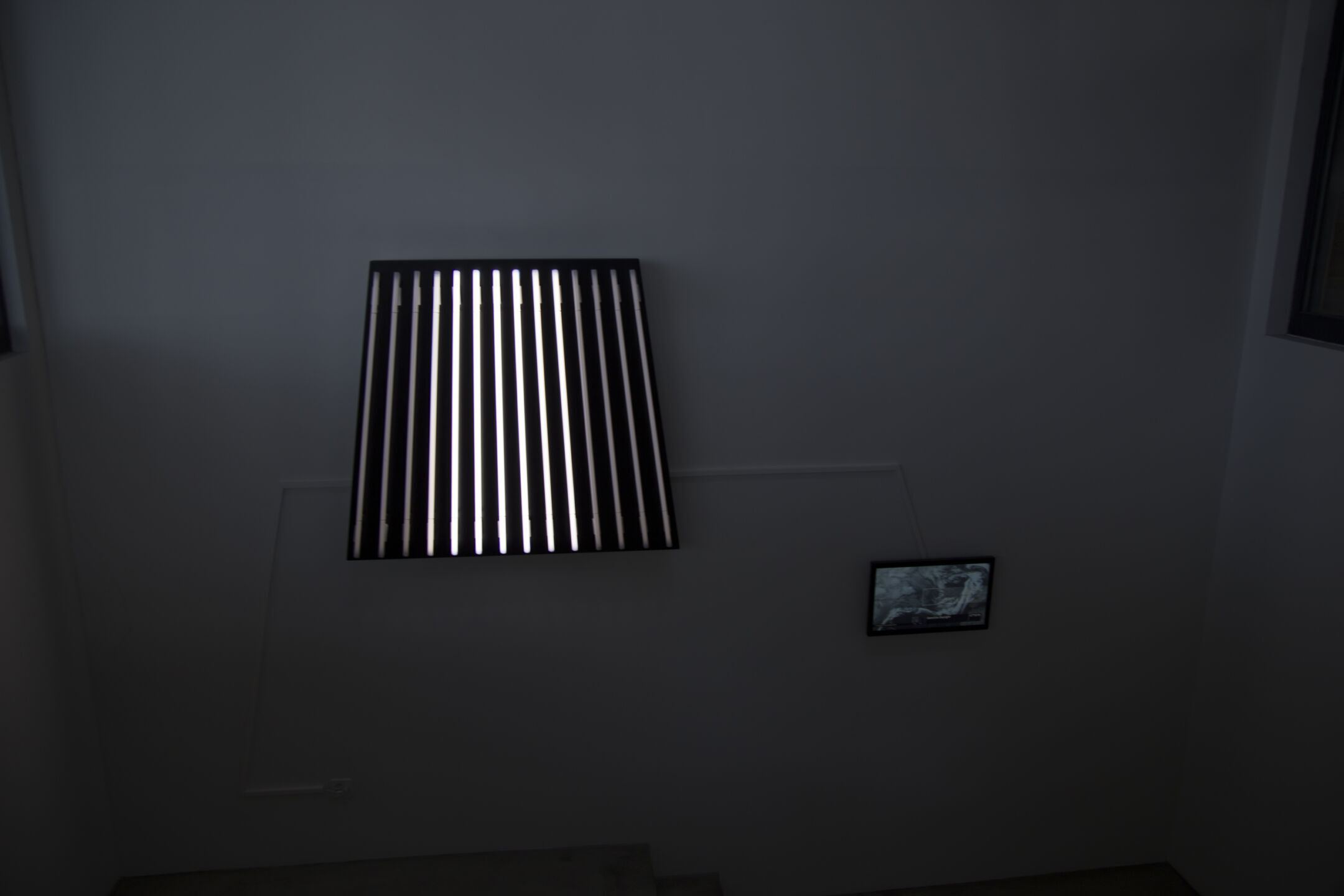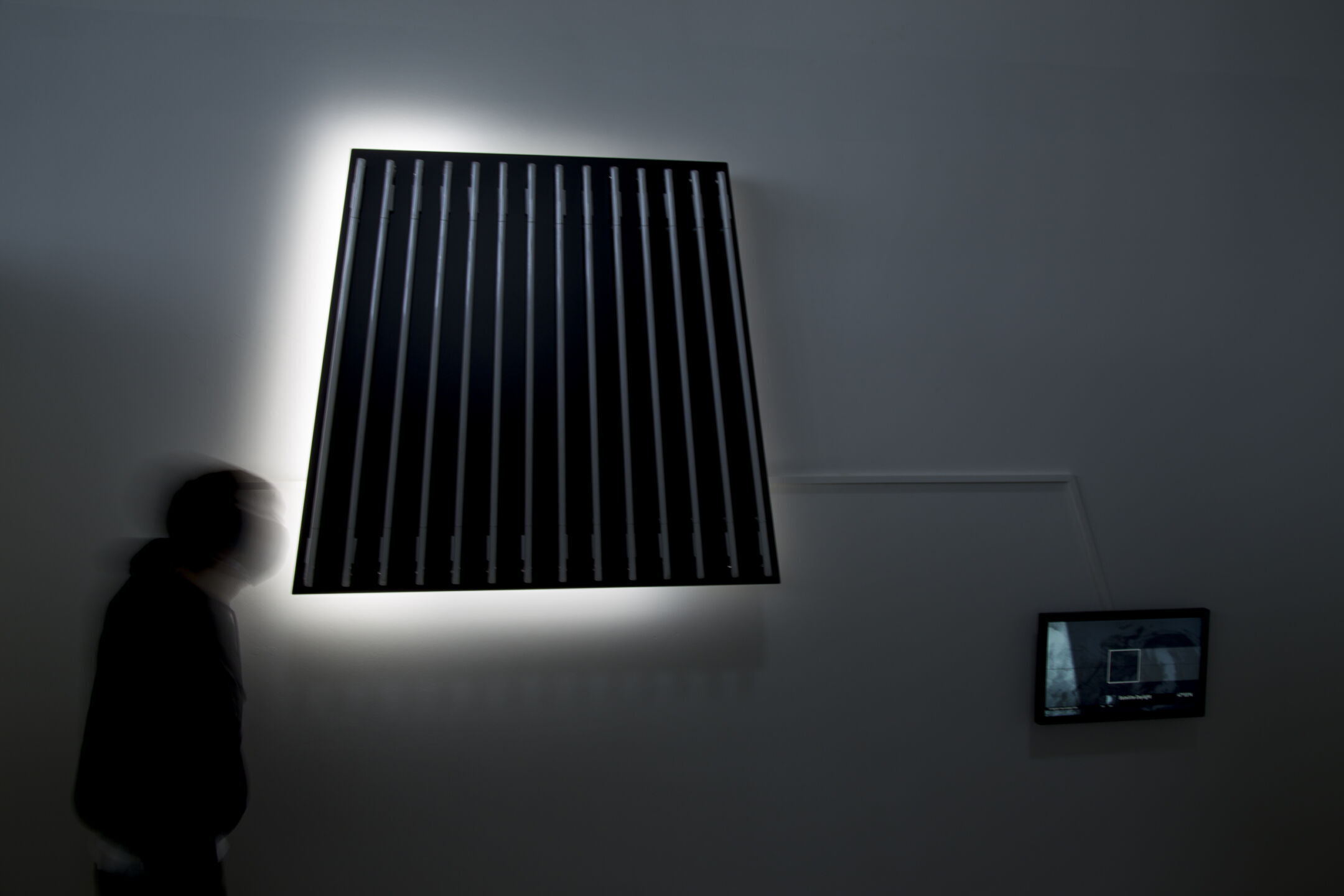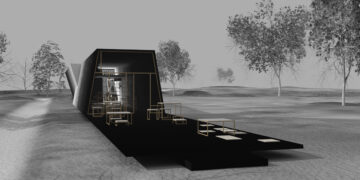fabric | ch
Satellite Daylight 47°33‘N
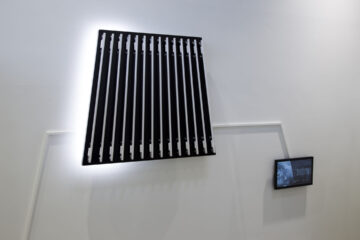
Satellite Daylight 47°33'N is an interactive light installation formed by a trapeze of 24 high-voltage neon tubes tapering upwards, created by fabric | ch – a studio for architecture, interaction and research dedicated to investigating contemporary space based in Lausanne. The installation is connected to data collected in real time from online weather stations and meteorological satellite maps, which therefore translate actual global light conditions picked up by satellites orbiting the earth at the latitude of Basel into an endless loop of perceivable electrical intensity.
Beside the light installation, a screen shows a real-time weather map with an imaginary satellite wandering around the world on the same latitude as Basel. By means of specially developed software, information related to actual weather conditions and the brightness of light around the position of the satellite is directly translated to the neon tubes. When the satellite passes through cloud cover, the neon tubes also darken correspondingly; and as it enters the darkness of night, the last neon tube on the front goes out, while the tubes on the back light up, indirectly visible, until the imaginary satellite re-enters daytime and the first neon lights go on. Travelling at an average speed of 7541m/s, a satellite takes about 90 minutes to orbit earth; hence the installation passes through approximately 15 shifts of day and night per exhibition day.
This evaluation and translation of real-time meteorological data enables the artists to abstractly show patterns of actual natural light through an artificial window. As viewers, we are also invited to adopt a perspective from orbit, indicated by the trapezoid tapering of the neon tubes towards the sky. This angle corresponds with a view looking down to the northern hemisphere of the earth’s body. Our reality of the world’s transformation to becoming a global village, where people dart faster and faster around the globe as communication and work processes accelerate, is also reflected in the light. As complex climatic, ecological, geo-political and health policy implications receive increasing public awareness, perhaps this exterior view through the window could sharpen our consciousness to sustainably shape insight and conclusions.
(Text: Bettina Back)
